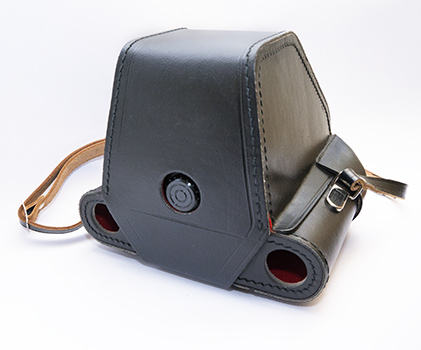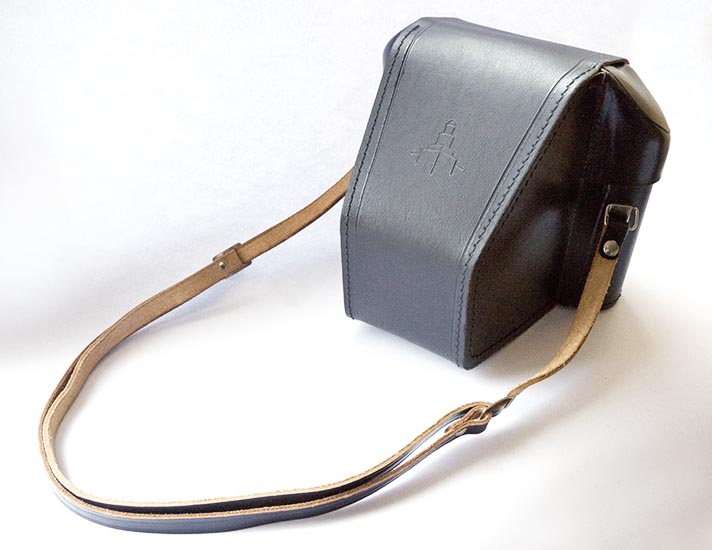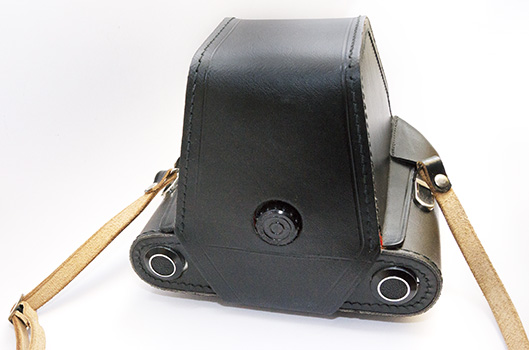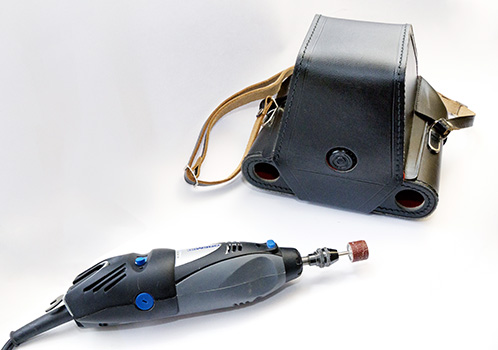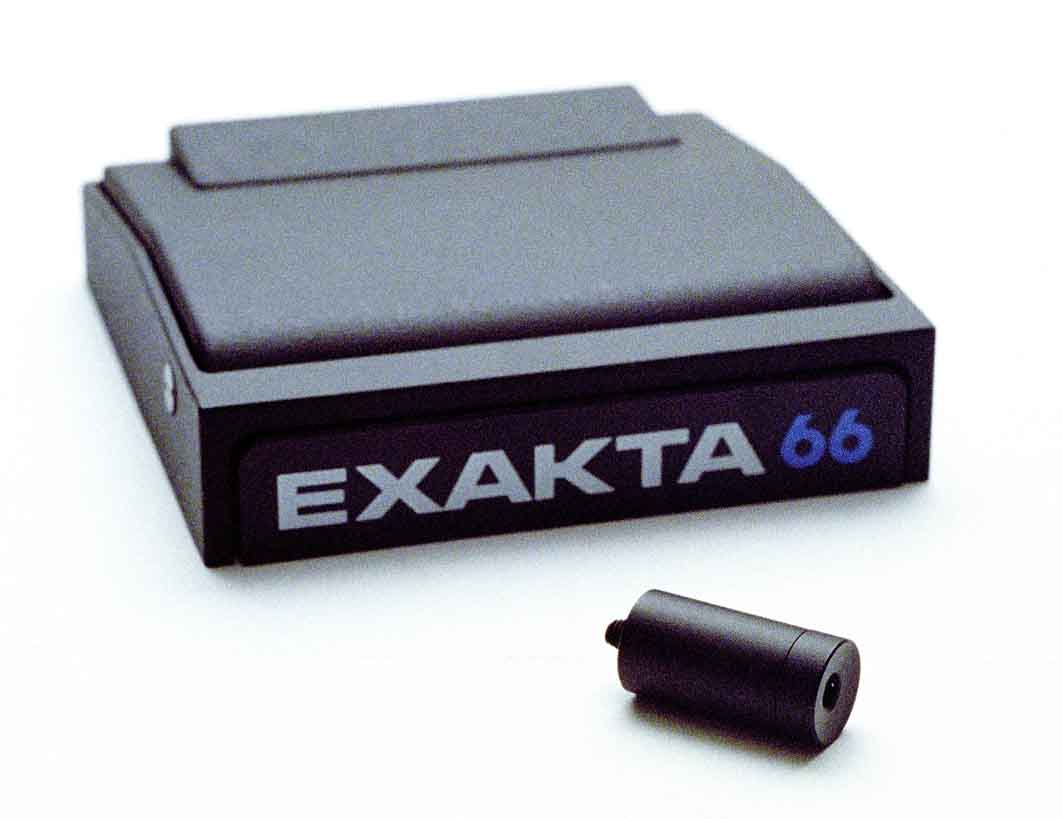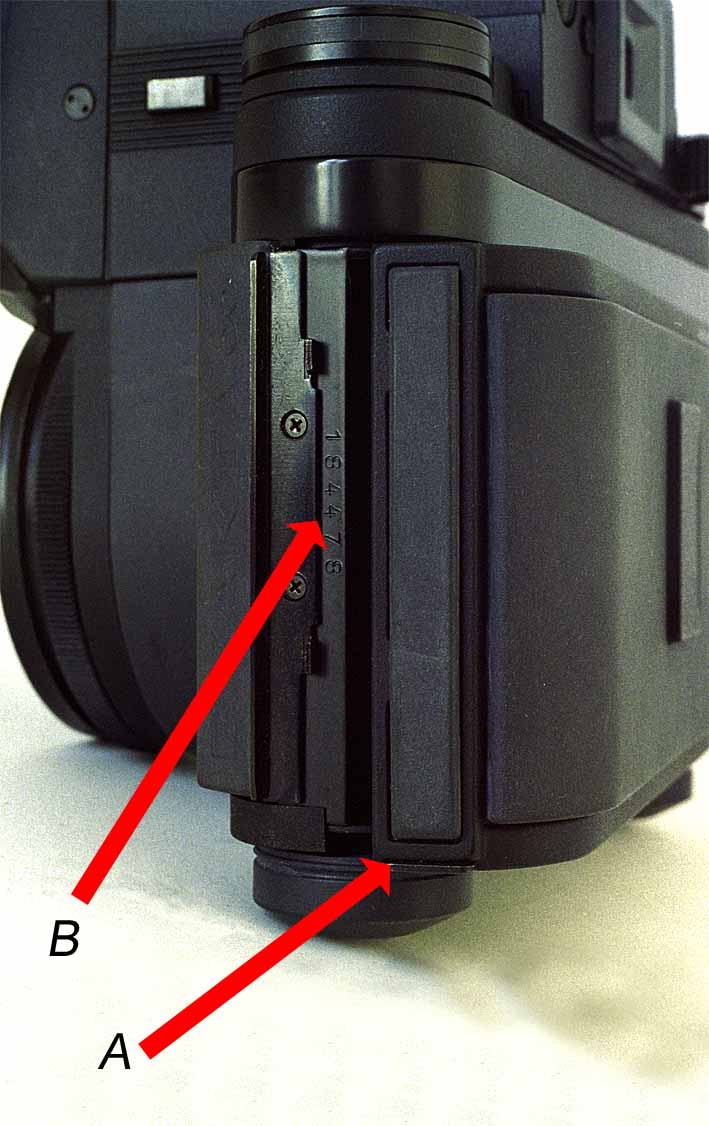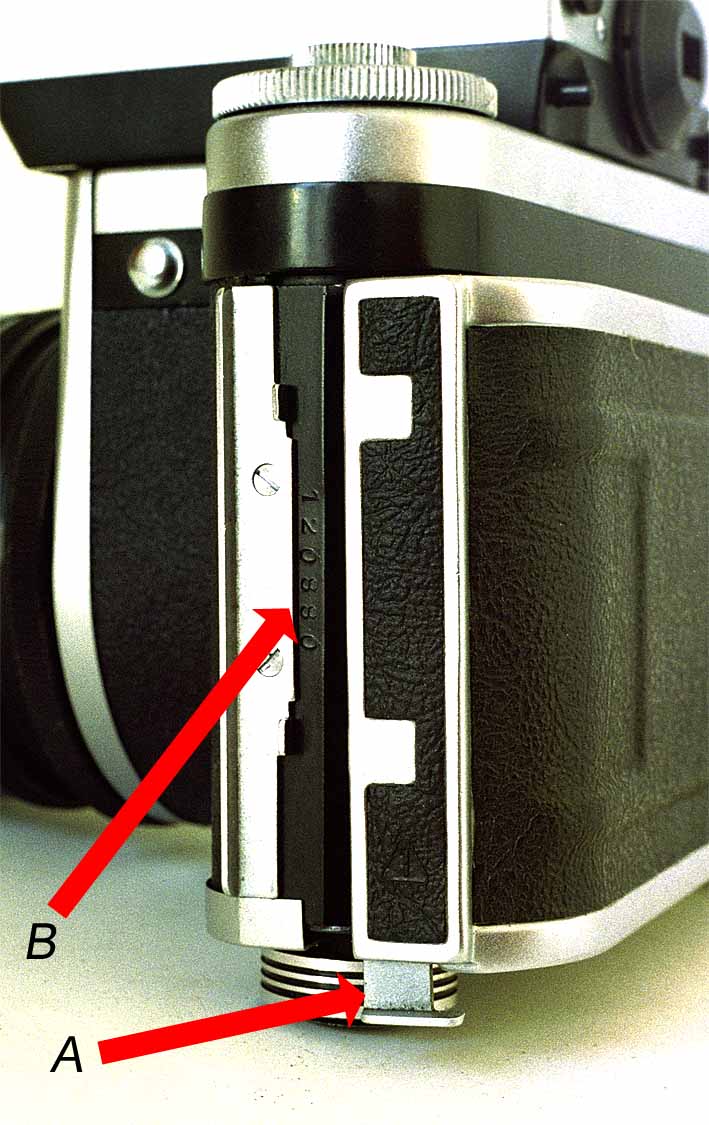
|
The Pentacon Six was usually supplied
with a large leather case, designed to accommodate the
camera complete with its metering prism, and I keep my
case permanently on my camera whenever I am using
it. As well as providing a strap and protecting
the camera, it gives me a place where I can slip a piece
of paper (between the camera back and the case) with
notes on what I have photographed and exposure
information (lens used, shutter speed and aperture).
In this image you can see the Ernemann Tower Pentacon Symbol on the front of the case. |
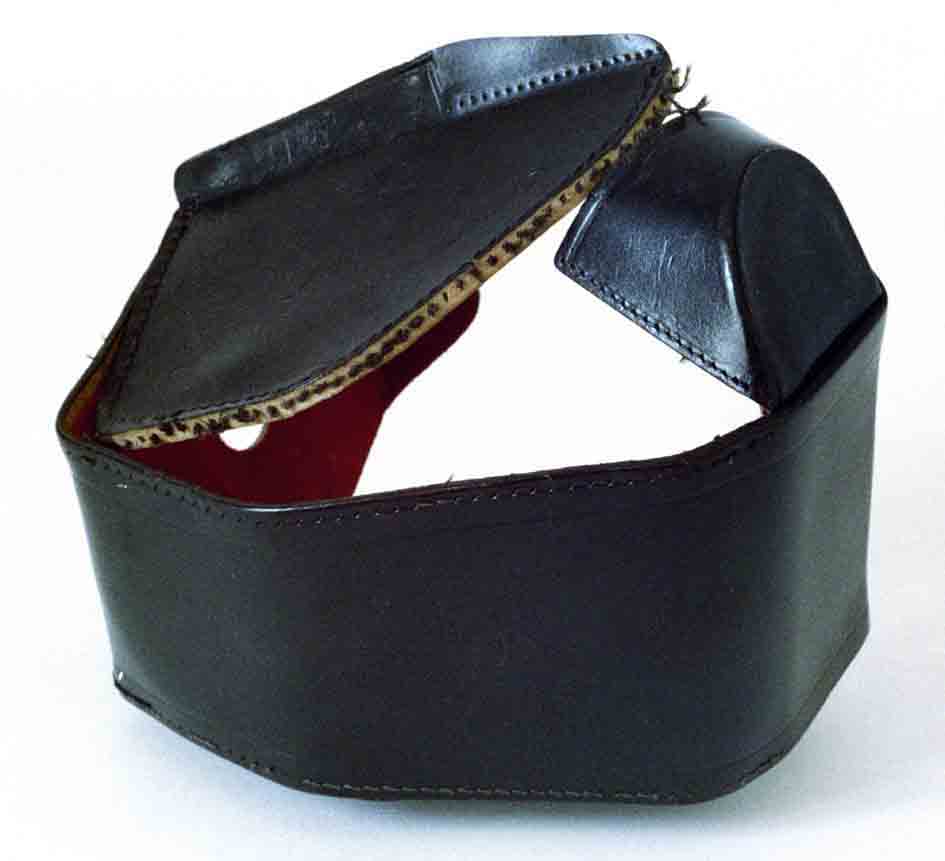
|
The only defect of this case is that
after a number of years the stitching
disintegrates. Re-stitching the case (using the
original holes!) is the only solution – a laborious and
finger-hurting exercise!
Here is the worst case (!) I have seen – one of mine! (subsequently re-stitched by me and now stronger than when new!)
|
